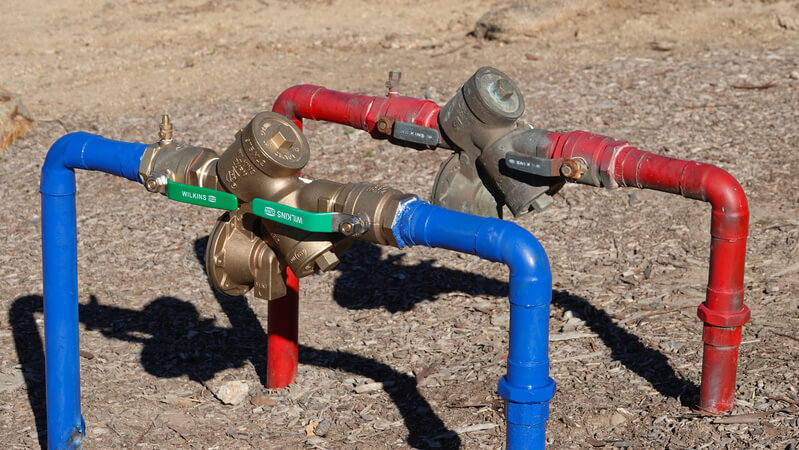
Backflow occurs when water goes in the opposite direction than it is supposed to. Backflow is not a good thing. It is very serious, as it can result in the contamination of your drinking water.
When backflow occurs, instead of your water flowing down your drains, to your sewer or septic system, the wastewater comes back up and out your drains.
This results in contamination of your drinking water from chemicals, organic compounds, metals, and biological components found in your wastewater.
Backflow is not a good thing because cross-contamination between your wastewater and potable water can occur when backflow occurs.
Why Backflow Occurs
There are three primary reasons why backflow issues occur.
- Broken Backflow Prevention Devices: Cross-contamination can occur if your backflow prevention device fails. Most plumbing fixtures have backflow prevention devices installed in the fixture to help protect your home.
- Water Pressure Issues: You need constant water pressure to prevent backflow and back siphoning, where water is pulled through your system. When water pressure drops, there is an increased chance of cross-contamination of useable and non-potable water.
Signs of Backflow
If you think your home is experiencing backflow issues, you will want to call M&E Plumbing for backflow testing and treatment. A few signs of backflow include:
- Strong sulfur smell
- Sudden slow or interrupted water flow
- Bad tasting water
- Visible rust particles or sediment
- Slow draining drains
- Discolored water
If you think your home is at risk of backflow, give us a call at M&E Plumbing right away. Backflow can result in polluted water and is a serious issue.
Backflow Prevention Devices
Most municipal codes do not require backflow prevention devices for residential homes unless you have an irrigation system.
However, that doesn’t mean you shouldn’t have a backflow prevention system. You can’t control when a backflow situation occurs, which is why you should install a backflow prevention device in your home.
There is a range of different backflow devices you can install:
- Air gap: An air gap is a space between a plumbing fixture's water outlet and the flood level.
- Pressure vacuum breaker (PVB): PVB systems are often used if you have an irrigation system. They keep non-potable water from contaminating your potable water sources.
- Double Check Valve Assembly (DCVA): This system uses two valves placed along your plumbing system. It is designed to prevent both back pressure and back siphonage situations.
- Reduced Pressure Zone Device: A reduced pressure zone device, which is referred to as RPV, RPZD, or RPZ. This device can only be installed outside if the area is always above freezing. It contains two spring-loaded check valves, three vertical test cocks, and two shutoff valves.
The exact device you need depends upon your setup and your home’s needs.
Benefits of Backflow Device for Homes
There are many benefits of installing a home backflow device.
- Keep your water supply clean by keeping pollutants such as bacteria, germs, organic waste, and harmful chemicals.
- Keep your water safe for drinking.
- Prevent help issues from consuming contaminated water.
- Meet legal requirements if you have an irrigation system
Installing a backflow device is the best way to keep your water supply safe. The law may require installing a backflow prevention device if you have an irrigation system.
Annual Testing
Annual testing is required for commercial backflow prevention devices. Annual testing is generally not required for residential backflow systems.
However, getting your backflow prevention device tested yearly is a good idea. Yearly testing will ensure your device works properly and help identify repairs and maintenance.
Backflow Service Near You in Grundy, Kendall, & Will Counties
At M&E Plumbing, we can take care of all your home backflow needs. We can repair, install, inspect and repair your backflow prevention device.
Call us at 815-600-9215, or use our service request form to arrange a service call.






